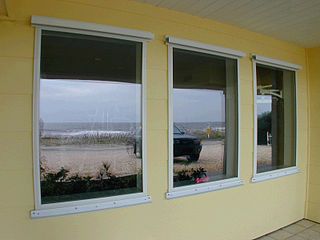From Guest Blogger Alejandro Rasca: How Green Windows Provide Energy Efficiency

Your carbon footprint is a measure of the amount of carbon dioxide (or its equivalent) associated with various actions and activities that we undertake every day. The electricity you use in your home typically comes from heavy-emitting industries such as coal or natural gas, unless you proactively choose a renewable energy resource like wind or solar. Thus, every kilowatt-hour you use in heating or cooling your home causes the industry to emit more greenhouse gas emissions and increases your carbon footprint. The Natural Resources Defense Council estimates that about a third of heat loss in a home happens through windows and doors. As of 2009, the EIA reported that 47.7% of energy consumption in home comes from space heating and air conditioning. While this is an improvement from the past, there are still many steps homeowners can take to increase their homes’ efficiencies. Simply investing in energy efficient windows can drastically reduce the amount of energy your home uses, simultaneously saving you money and shrinking your carbon footprint.
Windows may seem protective, but can lose heat through the processes of conduction, radiation, and air leakage. The type of window frame and even the way in which your windows open can determine how well your windows insulate your house. Energy efficient windows act as a stronger barrier between the comforts of your home and the outside environment. They not only provide more comfort (no more cold nights hiding from the windows), but the increased insulation means that they cut down on the percentage of heat lost from the home. Your HVAC system will thus need to work less to reach your desired temperature. As your home requires less energy, you will be responsible for less greenhouse gas emissions from the energy industry and your carbon footprint will decrease.
The National Fenestration Rating Council has created a list of the best energy-saving windows, many of which are manufactured from ENERGY STAR. ENERGY STAR has developed a multitude of energy efficient windows and has calculated metrics on just how much carbon dioxide you can save. By switching your single-pane windows with ENERGY STAR windows, anywhere from 1,147 to 3,839 pounds of CO2 (or 59 to 196 gallons of gasoline) are diverted from the atmosphere. In addition to your relieved eco-conscience, your pocket will be retaining anywhere from 7 -15% of your electricity bills.
There are many ways to improve your windows, from changing the type of window frame to using a tinted or reflective glaze on the windows. While the upfront cost of completely replacing your windows may be shocking, there are tax incentives in the U.S. and Canada to help you make the step to a more efficient home. If the cost is still too steep, you can opt to simply repair your windows or add something to help your window’s efficiency; adding an awning, blinds, curtains, window screens, and storm panels to your home can help reduce heat loss and energy costs.
New energy efficient windows have the ability to promote clean and sustainable energy practices. The more efficient your home, the less reliance you have on large greenhouse gas emitting industries, and the smaller your carbon footprint.
About the Author: Alejandro Rasca is a green enthusiast who helps out the folks at Boulevard Exteriors install energy efficient windows and doors in Calgary and the surrounding areas.
